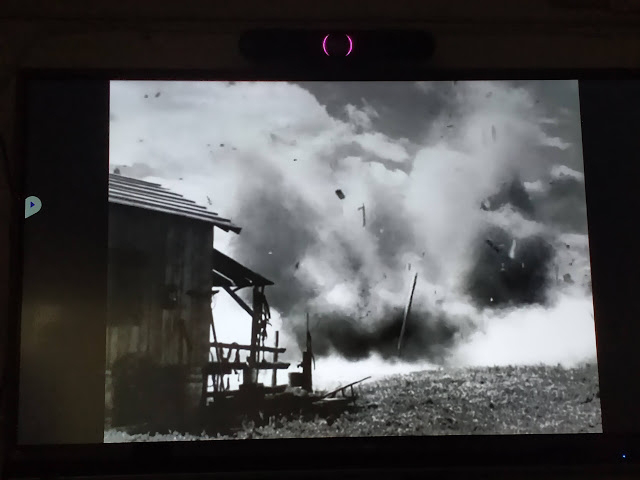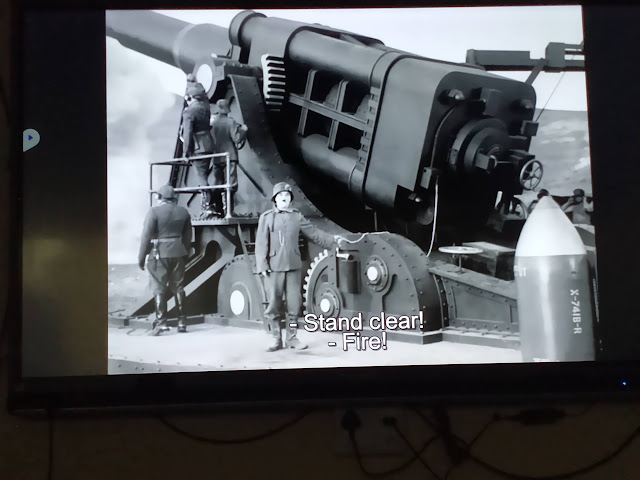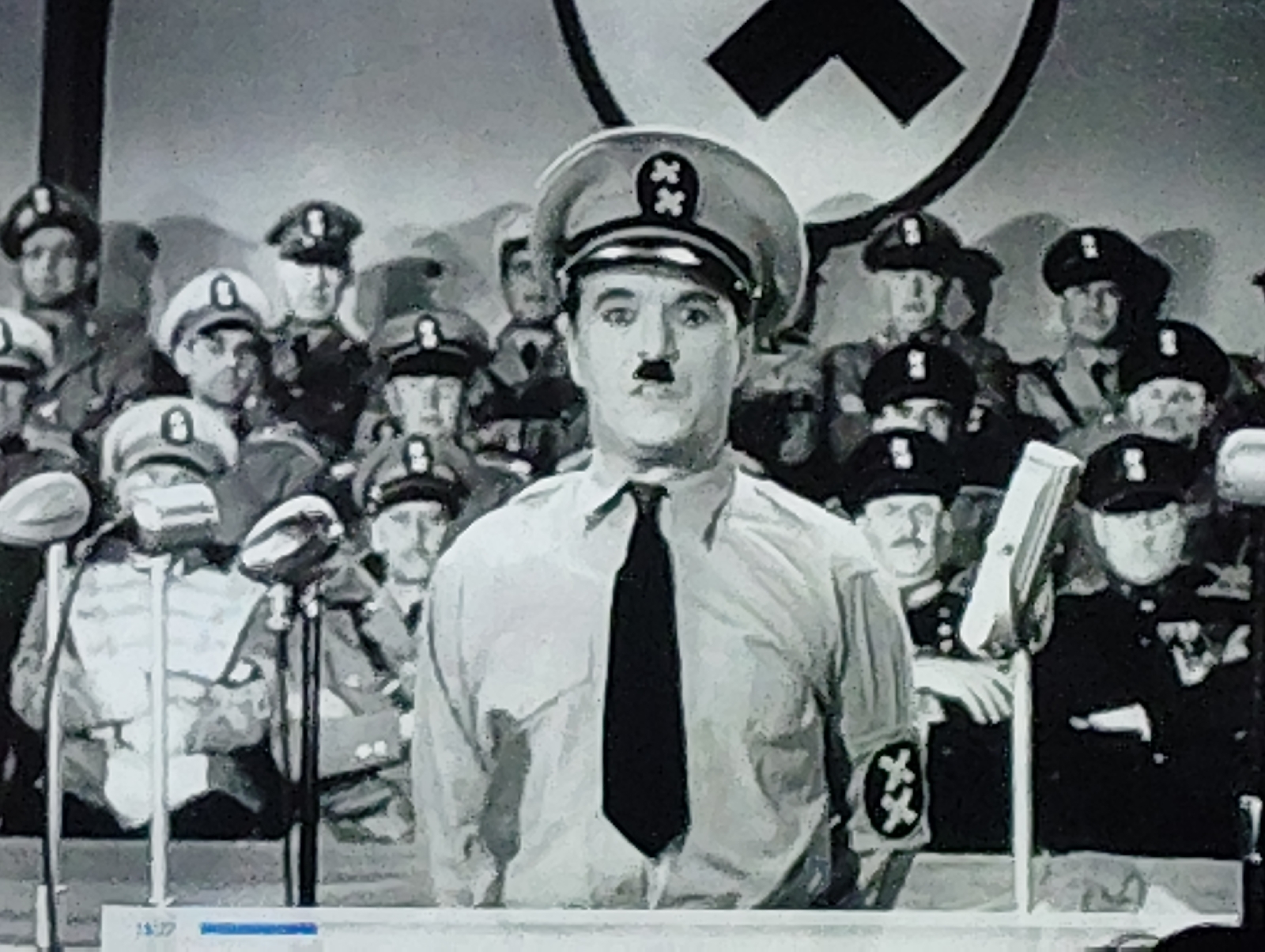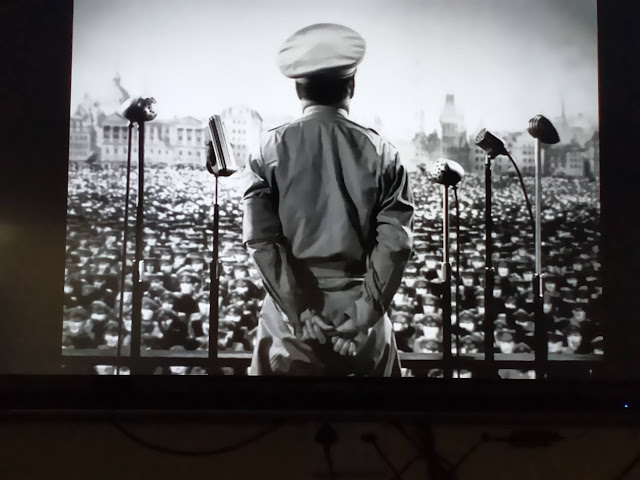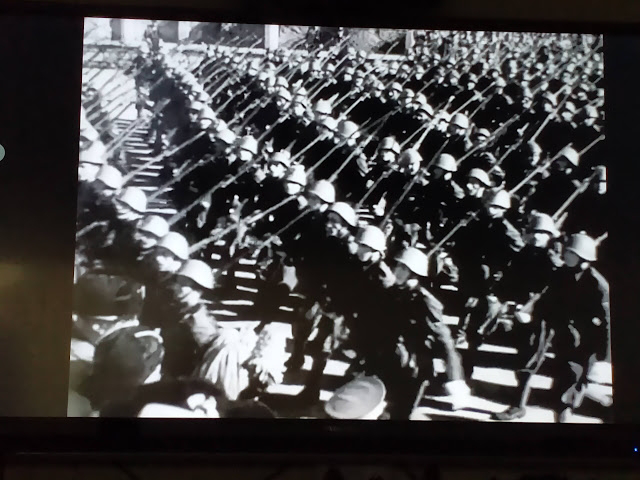Thinking Activity
This blog is prepared as part of thinking activity to understand the thematic concerns of the movie "The Great Dictator" by Chaplin.
The Great Dictator
Charlie Chaplin's "The Great Dictator" is a bold 1940 satirical comedy-drama film that takes on Adolf Hitler, fascism, and anti-Semitism during a time when the U.S. was neutral in World War II. Chaplin, the writer, director, and star, plays two roles—the absurd dictator Hynkel and a Jewish barber resembling him. Using humor, the film addresses serious political issues, showcasing Chaplin's mastery of comedy. A standout moment is the emotional plea for peace and humanity in the final speech by the Jewish barber. This timeless masterpiece not only entertains but also conveys a strong anti-totalitarian message.
Dictators of the 20th Century
The 20th century saw the rise of several infamous dictators throughout the world, who left a lasting impact on history.
Adolf Hitler (Germany, 1933-1945): The leader of the Nazi Party, Hitler orchestrated the Holocaust and led Germany into World War II, who is here depicted as humourous character- Hynkel. Joseph Stalin (Soviet Union, 1924-1953): As the leader of the Soviet Union, Stalin was responsible for the Great Purge and implemented harsh policies that led to the deaths of millions. Benito Mussolini (Italy, 1922-1943): The founder of Italian Fascism, Mussolini established a dictatorship, aligning Italy with Nazi Germany during World War II. Francisco Franco (Spain, 1939-1975): A military dictator, Franco ruled Spain for nearly four decades, following the Spanish Civil War. Mao Zedong (China, 1949-1976): As the founding father of the People's Republic of China, Mao Zedong led the country through the Chinese Communist Revolution. Pol Pot (Cambodia, 1975-1979): The leader of the Khmer Rouge, Pol Pot orchestrated the Cambodian Genocide, resulting in the deaths of millions. Kim Il-sung (North Korea, 1948-1994): The founding leader of North Korea, Kim Il-sung established a dynastic regime that continues to this day.
These dictators had significant and often devastating impacts on their respective nations and the world at large. Observing dehumanizing impacts of these dictators, Chaplin constructed the movie 'The Great Dictator'.
Frame Study of the Movie
The movie kicks off with a war scene in the background. There are several soldiers fighting against enemies. Around them, one can see the wooden planks connected to each other with wire, which is typical of the war background. This symbolizes how humans are trapped in prisons like war.
It is obvious that some heavy weapons were used in the war. In the movie, there is also a picture of a colossal war tank, which refers to the deep impact of the war and the necessity to be victorious in war.
There is a double role for Chaplin in the movie. One is Hynkel, and the other is a Jewish barber who serves as a symbol of a war victim. Through the barber's experience, Chaplin sheds light on the impact of war on a normal person, emphasizing their spirit and humanity.
This frame shows that a soldier is surrounded by thick fog, which serves as a metaphor for the obscured and chaotic state of the world during the 20th century war period and represents the confusion and uncertainty laid by war. This scene also stands as one seeking clarity in their lives as war goes on in their country.
This frame shows the vast castle in which Hynkel resides, who himself is as tiny as his intentions and character. Above him there is a sign of the cross, which refers to the 'Swastika', the symbol of the Nazi party of Hitler. The symbol is closely associated with Adolf Hitler's regime and is now widely seen as a symbol of hate, anti-Semitism, and atrocities committed during World War II.
This frame demonstrates Hynkel's speech, which is often delivered with exaggerated grandiosity, mimicking the bombastic style of the dictator Hitler. Hynkel's speech also stands for misuse of power, by using political jargon, Hynkel manipulates people. Such charismatic oratory is dangerous, especially when exploiting emotion and fear. The gestures and postures that are used while giving speeches help dictators create a facade of strength and authority, and the topic of such speeches oftentimes revolves around fake nationalism to create tension between people.
This frame shows mobocracy, where a large crowd take matters into their hands in the warfare. Such demonstration is necessary in those days to showcasing military strength of the nation.
This frame clearly offers reference to human life during the war period. As if people in this period were trapped in a fictional prison of war with restrictions that were laid on them during the Second World War. Birds flying in the vast and open sky are often used as symbols of liberty and peace, but here they are captivated like people in their homes.
After a while, the narrative shifts to the political meeting of two great dictators, Napaloni and Hynkel. In this frame, Hynkel tries to make his chair longer than that of Napaloni, which serves as a symbol of one's desire for power and authority. Moreover, Hynkel's posture and his facial expressions while sitting on the chair illustrate his confidence in authority.
This is one of the significant frames to study, which demonstrates Hynkel's desire to rule over the world and dominate the whole world with sheer military force. When Hynkel plays with the globe, his face and body movements show different feelings, like being really happy or acting very powerful. These details make the scene more funny on purpose, adding humor and satire to the movie. Hynkel aggressively punctures the globe, which can be seen as his disregard for his enemy nations. This scene demonstrates a wide range of interpretations, centered around Hynkel's dictatorial ambitions.
This frame shows Hynkel trying to be innocent, which is in contrast with the sinister nature of Hynkel's character. The incongruity between innocent children and the dictator creates a powerful visual impact. In today's time, there are also so many politicians who actively interact with children to prove their innocence and their noble intentions, but this idea of playing with children is only superficial; this type of scene is nothing but a personality cult. Hynkel manipulates innocence for political purposes.
This frame illustrates the importance given to the artists during the war. In the frame, there are two artists working on the different portraits of Hynkel, but he comes for posing whenever he is free and seems to have no respect for the artists at all. This theme takes a broader perspective and refers to the diminished respect for artists during the war period. Anti-art is one of the chief characteristics of the 20th century.
NOTE: I have utilized ChatGPT to enhance my understanding of frames.
WORD COUNT: 1104
IMAGES USED: 16
Thank you.


